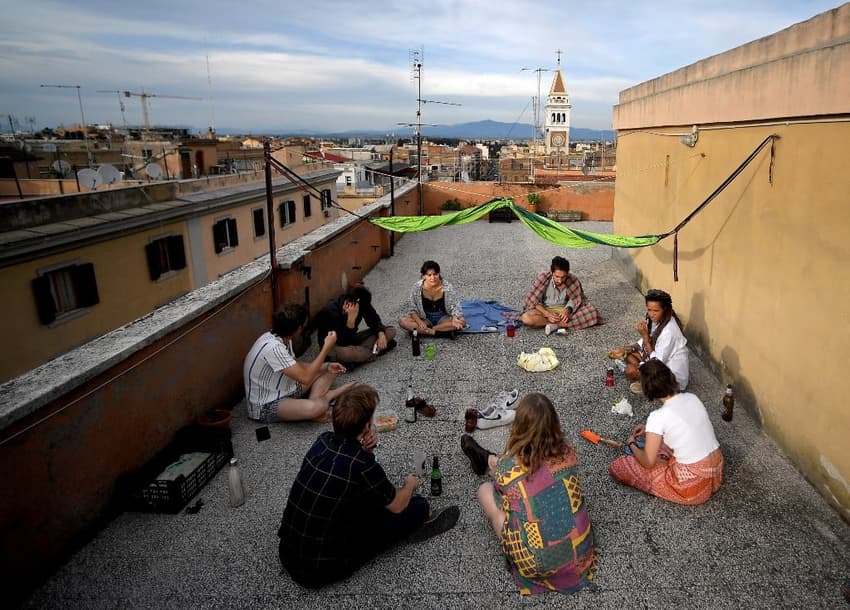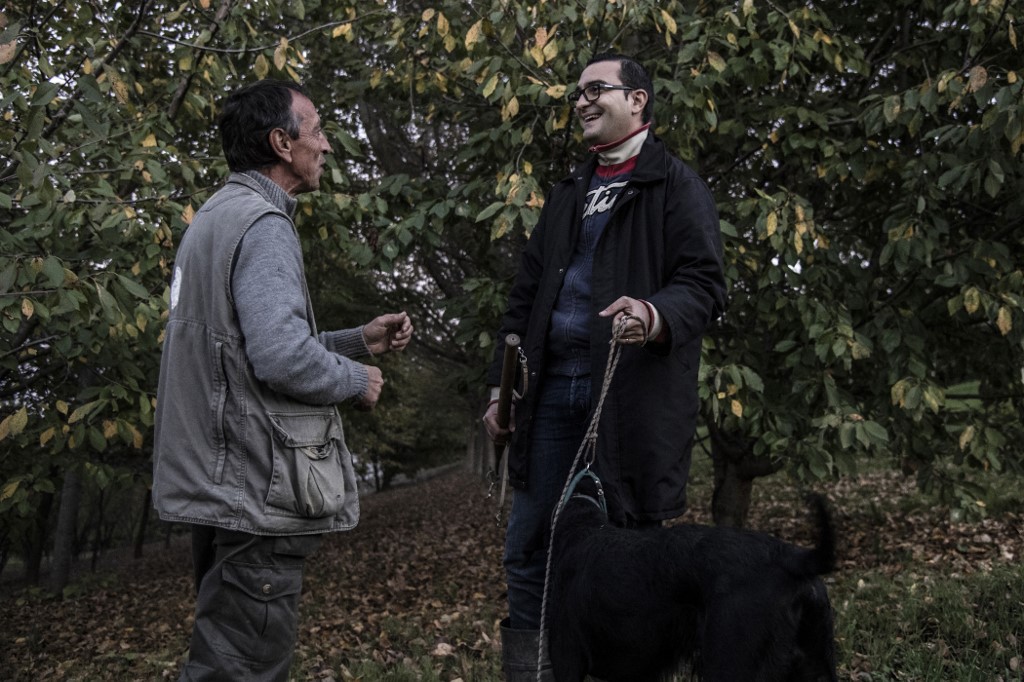Buongiorno, buonasera, buonanotte: How to greet people like a local in Italian

Many Italian greetings are popular even outside of Italy. But do you know the unwritten social rules on when and how to use them?
Each language has its own unique set of greetings and Italian is no exception.
From the popular buongiorno and buonasera to salve and a presto, Italian has plenty of salutation forms, which span virtually all types of social context and occasion, both formal and informal.
Rather confusingly though, their use is for the most part regulated by unwritten rules and custom, which can make it hard for foreign speakers to master even some of the most basic forms, sometimes leading to embarrassing faux pas and slightly perplexed looks from locals.
Buongiorno
Unlike English speakers, Italians don’t greet one another with ‘good morning’ but with ‘good day’.
The Italian buongiorno is suitable for nearly any social occasion where you meet someone, whether that be your new boss at work or your Italian aunties.
The time window in which the greeting is generally used goes from early morning to noon, though some speakers choose to extend it well into the afternoon (see later).

Rules regulating the use of Italian greetings are largely unwritten and may vary from region to region. Photo by MARCO BERTORELLO / AFP
If you’re looking to add a native-like twist to the greeting, you can omit buon and just say giorno.
READ ALSO: Eight Italian exclamations that will make you sound like a local
Remember: buongiorno shouldn’t be confused with buona giornata, which is the equivalent of the English ‘have a good day’ and is used when ending a conversation.
Buon pomeriggio
While ‘good afternoon’ is a popular greeting in the English-speaking world, the Italian buon pomeriggio, which would generally apply from noon to 5pm, is often avoided by native speakers.
In fact, for reasons that remain unclear (some point to it being too lengthy or too formal), most prefer buongiorno to buon pomeriggio when greeting someone in the afternoon.
All in all, you can freely choose and use whichever form you’re most comfortable with.
Buonasera
There is no precise rule for when you can switch from buongiorno (or buon pomeriggio) to buonasera (‘good evening’), with local habits often varying greatly from region to region.
Many native speakers in the north start using buonasera when daylight starts to wane. This means that the buonasera time window shifts forward and backwards depending on the time of the season.
But people in some parts of the south may use buonasera as early as 3pm or 4pm, something that would certainly raise a few eyebrows elsewhere in the peninsula.

'Buonasera' is arguably one of the most confusing Italian greetings as people around the country often use it at different times. Photo by Filippo MONTEFORTE / AFP
In most cases then, the best way to get the buonasera greeting right is to pay attention to local customs and stick with those.
READ ALSO: Ten Italian words stolen into English and reinvented
Much like buongiorno, you can use it with people you know and people you don’t know. And again, in some parts of the country, many drop buona and just say sera.
Buonasera is not the same as buona serata, as the latter translates to ‘have a good evening’.
Buonanotte
Unlike all of the above forms, buonanotte (‘good night’) shouldn’t be used when meeting someone, but rather when you’re about to end a conversation or leave a place.
As a rule of thumb, you can safely use it after dinnertime and when you’re sure you won’t be seeing or hearing from someone until the following morning.
For instance, you could use it when leaving a friend’s place after you had an evening spaghettata with them or to wrap up a message conversation before you go to bed.
Other common greetings
Ciao
Ciao is the most informal of Italian greetings and can be used to start a conversation or end it at any time of the day.
It’s generally advisable to avoid using ciao with people you don’t know, especially if they’re older than you, hold public roles or are your superior at work. But you can use it with the local panettiere (baker) or other shop owners.
Salve
Salve is arguably the most formal Italian greeting and comes straight from Latin, where it means ‘be in good health’. Like ciao, it can be used both to greet someone and as a way to sign off.
READ ALSO: The Italian versions of 11 famous English sayings
Many Italians tend to avoid it as they consider it too ceremonious.
Arrivederci / a risentirci
Arrivederci is the closest equivalent of the English ‘goodbye’, though its literal translation is ‘until we meet again’.
It’s more formal than ciao but less pompous than salve.
When ending a conversation over the phone, it can be replaced by a risentirci (‘until we speak again’).
Comments (1)
See Also
Each language has its own unique set of greetings and Italian is no exception.
From the popular buongiorno and buonasera to salve and a presto, Italian has plenty of salutation forms, which span virtually all types of social context and occasion, both formal and informal.
Rather confusingly though, their use is for the most part regulated by unwritten rules and custom, which can make it hard for foreign speakers to master even some of the most basic forms, sometimes leading to embarrassing faux pas and slightly perplexed looks from locals.
Buongiorno
Unlike English speakers, Italians don’t greet one another with ‘good morning’ but with ‘good day’.
The Italian buongiorno is suitable for nearly any social occasion where you meet someone, whether that be your new boss at work or your Italian aunties.
The time window in which the greeting is generally used goes from early morning to noon, though some speakers choose to extend it well into the afternoon (see later).

If you’re looking to add a native-like twist to the greeting, you can omit buon and just say giorno.
READ ALSO: Eight Italian exclamations that will make you sound like a local
Remember: buongiorno shouldn’t be confused with buona giornata, which is the equivalent of the English ‘have a good day’ and is used when ending a conversation.
Buon pomeriggio
While ‘good afternoon’ is a popular greeting in the English-speaking world, the Italian buon pomeriggio, which would generally apply from noon to 5pm, is often avoided by native speakers.
In fact, for reasons that remain unclear (some point to it being too lengthy or too formal), most prefer buongiorno to buon pomeriggio when greeting someone in the afternoon.
All in all, you can freely choose and use whichever form you’re most comfortable with.
Buonasera
There is no precise rule for when you can switch from buongiorno (or buon pomeriggio) to buonasera (‘good evening’), with local habits often varying greatly from region to region.
Many native speakers in the north start using buonasera when daylight starts to wane. This means that the buonasera time window shifts forward and backwards depending on the time of the season.
But people in some parts of the south may use buonasera as early as 3pm or 4pm, something that would certainly raise a few eyebrows elsewhere in the peninsula.

In most cases then, the best way to get the buonasera greeting right is to pay attention to local customs and stick with those.
READ ALSO: Ten Italian words stolen into English and reinvented
Much like buongiorno, you can use it with people you know and people you don’t know. And again, in some parts of the country, many drop buona and just say sera.
Buonasera is not the same as buona serata, as the latter translates to ‘have a good evening’.
Buonanotte
Unlike all of the above forms, buonanotte (‘good night’) shouldn’t be used when meeting someone, but rather when you’re about to end a conversation or leave a place.
As a rule of thumb, you can safely use it after dinnertime and when you’re sure you won’t be seeing or hearing from someone until the following morning.
For instance, you could use it when leaving a friend’s place after you had an evening spaghettata with them or to wrap up a message conversation before you go to bed.
Other common greetings
Ciao
Ciao is the most informal of Italian greetings and can be used to start a conversation or end it at any time of the day.
It’s generally advisable to avoid using ciao with people you don’t know, especially if they’re older than you, hold public roles or are your superior at work. But you can use it with the local panettiere (baker) or other shop owners.
Salve
Salve is arguably the most formal Italian greeting and comes straight from Latin, where it means ‘be in good health’. Like ciao, it can be used both to greet someone and as a way to sign off.
READ ALSO: The Italian versions of 11 famous English sayings
Many Italians tend to avoid it as they consider it too ceremonious.
Arrivederci / a risentirci
Arrivederci is the closest equivalent of the English ‘goodbye’, though its literal translation is ‘until we meet again’.
It’s more formal than ciao but less pompous than salve.
When ending a conversation over the phone, it can be replaced by a risentirci (‘until we speak again’).
Join the conversation in our comments section below. Share your own views and experience and if you have a question or suggestion for our journalists then email us at [email protected].
Please keep comments civil, constructive and on topic – and make sure to read our terms of use before getting involved.
Please log in here to leave a comment.